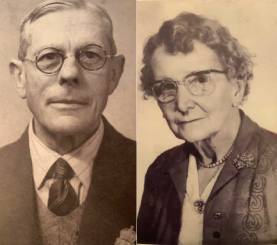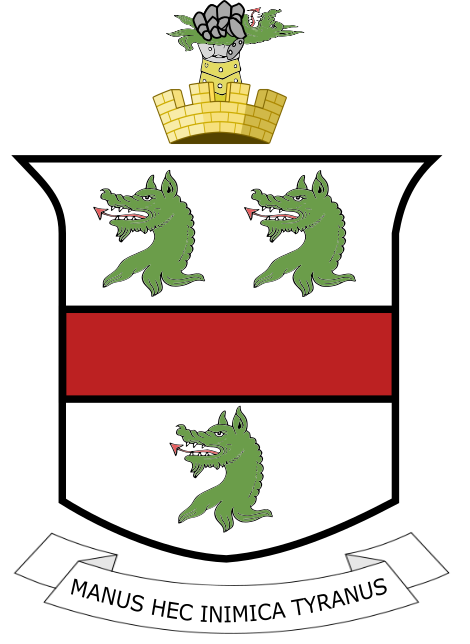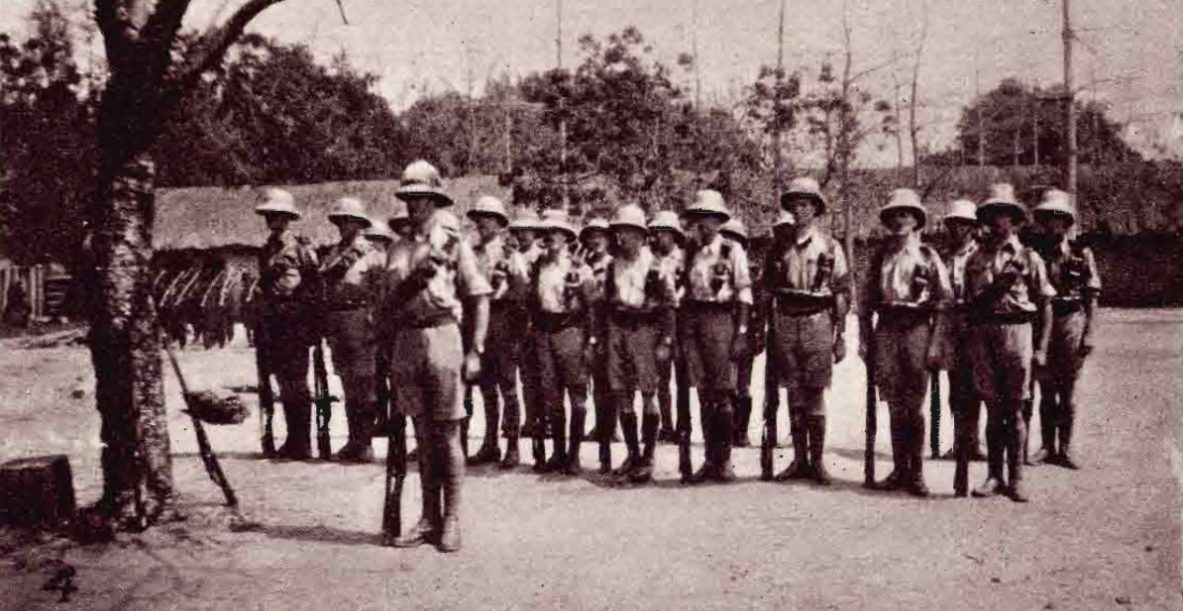 Charles Walter Millett was born at 1, The Poplars, Hampton Road, Twickenham, Middlesex on 21st December 1879, (possibly 21st Feb. 1880 according to the baptism records), and Baptised on 4th May 1880 at Holy Trinity Church, Twickenham.
Charles Walter Millett was born at 1, The Poplars, Hampton Road, Twickenham, Middlesex on 21st December 1879, (possibly 21st Feb. 1880 according to the baptism records), and Baptised on 4th May 1880 at Holy Trinity Church, Twickenham.
By the time of the 1881 census, the family had moved to the heart of London at 2 Brompton Square, Kensington, a stone’s throw from Hyde Park.
Charles was educated at Worthing College, St. Dunstan’s College in Catford, South London and Ashton Grammar School, Dunstable. Between 1892 and 1896 he attended the Polytechnic, Regent Street, London before furthering his education at University College, Gower Street, London. [1]
From 1899 through to 1902, Charles served an apprenticeship in the drawing office of Messrs. George Wailes and Company of Euston Road, London, engineers and millwrights, machine tool merchants, machinists and tool dealers. [1]
Charles was elected a member of The Institution of Junior Engineers in 1899. The Junior Institution of Engineers was founded as the Vulcanic Society in 1884, changing its name to the Junior Institution of Engineers in 1902. It was established by junior engineers to instruct and encourage young engineers at the start of their professional careers.
From 20th October 1902, Charles was employed as a draughtsman at the Automatic Gem and Gold Separator Syndicate at 10 St. Swithin’s Lane, London. [1]
Charles was elected a Graduate of the Institution of Mechanical Engineers in 1903 and subsequently an Associate Member in 1905. At this time he was signing his name as Walter Millett, preferring this over his given name of Charles. [1] (I will continue to refer to him as Charles.)
He remained in London until the war of 1914-18 when he enlisted, and during 1914-15 saw active service with the East Africa Volunteers. The East African campaign in World War I was a series of battles and guerrilla actions, which started in German East Africa (GEA) and spread to portions of Portuguese Mozambique, Northern Rhodesia, British East Africa, the Uganda Protectorate, and the Belgian Congo.
Having returned from British East Africa, on 26 November 1916, Charles married Constance Mary Cooke (see below).
He was employed as an Assistant Engineer with the newly formed Ministry of Agriculture and Fisheries until 1922 when he returned to East Africa to work on the erection of the power station in Mombasa.
Returning to England again in 1925 Charles acted as contractor’s agent to the Newport Water Works Company. He then became a resident engineer at the Guildford Corporation’s Water Works. His final post was in a similar role with the Cheltenham and Gloucester Joint Water Board. [26]
Employment:
1902 to 1905: Employed as a draughtsman by various firms in London.
1914 to 1918: On active service in the East Africa Volunteers
1919 to 1922: Assistant engineer in the Ministry of Agriculture and Fisheries
1922 to 1925: Construction of Mombasa Power Station, East Africa.
1925 to 1928: Contractor’s agent to the Newport Water Works Company
1928: Contractor’s agent to the Cheltenham and Gloucester Joint Water Board.
- 1881 (Age 1) 2, Brompton Square, London
- 1891 (Age 11) 89 – 91, Westminster Bridge Road, London. (Scholar)
- 1901 (Age 21) 1, Stratford Place, Marylebone. (Engineer Articled Clerk)
- 1911 (Age 31) Abbotsford, Hampton Wick.
- 1930, 18 Orchard Road, Kingston 1936, 13 Charlton Place, Kingston (Electoral Register)
- 1939, 6 Abbey Terrace, Tewkesbury (1939 England & Wales Register *)
* The 1939 Register was taken on 29 September 1939. The information was used to produce identity cards and, once rationing was introduced in January 1940, to issue ration books. Information in the Register was also used to administer conscription and the direction of labour and to monitor and control the movement of the population caused by military mobilisation and mass evacuation.

Marriage:
Charles married Constance Mary Cooke (1888-1970) of Nunhead, Surrey, on 26th November 1916 at St. Stephen’s Church, Hounslow, being the home parish of Charles’ bride.
Children:
- Francis Henry Walter Millett was born on 28th February 1919 at 54 Mornington Crescent, Chingford, Essex
- Joyce Helena Millett was born on 1st March 1920 at 18 Orchard Road, Kingston, and baptised at All Saints, Kingston Upon Thames, on May 16th.
Charles was a trustee of the Passmore Edwards Institute in Hayle, Cornwall in 1893. The Institute was erected to provide education and technical training for local men at a time when Hayle was suffering from a decline in the mining industry, a decline from which Hayle had yet to recover.
Charles died on 8th August 1942 at Kingston upon Thames. He was 62 years of age.
In 1943 his obituary was published by the Institute of Mechanical Engineers:
CHARLES WALTER MILLETT, whose death occurred in his sixty-third year on 8th August 1942, was elected a Graduate of the Institution in 1903 and was transferred to Associate Membership in 1905. After receiving his technical education at the Polytechnic, Regent Street, and at University College, London, during which period he served his apprenticeship with Messrs. George Wailes and Company, Euston Road, he was, from 1902 to 1905, employed as draughtsman by various firms in London. He remained in London until the war, of 1914-18; he then enlisted and during 1914-15 was on active service in the East Africa Volunteers. From 1919 until 1922 he was assistant engineer in the Ministry of Agriculture and Fisheries, after which he returned to East Africa and was engaged on the erection of the power station at Mombasa. On his return to England in 1925 he acted as contractor's agent to the Newport Water Works Company for three years. He then became resident engineer at the Guildford Corporation's Water Works. Mr. Millett finally occupied a similar position with the Cheltenham and Gloucester Joint Water Board.

